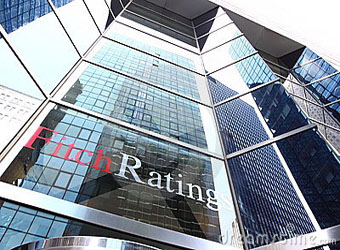Rising foreign exchange reserves, a return of private capital inflows and currency appreciation point to further progress in Egypt’s gradual external rebalancing in early 2017, Fitch Ratings said in its latest report released on Wednesday.
Further fiscal consolidation alongside external rebalancing would lay the groundwork for a broader-based improvement in sovereign credit metrics in 2018.
“However, challenges, including the risk of social unrest, are substantial. Even if the envisaged reforms progress smoothly, it would take several years to reduce gross general government debt to more sustainable levels.” Fitch added.
FX reserves have continued to rise, with net international reserves reaching $26 billion at the end-January – up from $24 billion at end-December and more than $10 billion above their July 2016 low. The Egyptian pound has strengthened 20 percent against the US dollar since late December, reversing some of its losses following November’s flotation.
“A return of foreign inflows into Egyptian treasuries prompted a partial retracement of government debt yields, with 91-day T-bill yields down by around 200bp in the month to mid-February (although yields ticked up in subsequent auctions, pointing to potential volatility). Anecdotal evidence suggests progress clearing the backlog of FX demand in the economy.”
The rating agency’s report further said that these positive developments largely reflect inflows from multilateral and bilateral institutions – notably the IMF and World Bank – and a resumption of foreign portfolio inflows and remittances after the authorities floated the pound, as well as import compression and improving export activity.
“As such, they are in line with our general expectations when we affirmed Egypt’s ‘B/Stable’ sovereign rating in December following the flotation and IMF board approval of a $12 billion extended fund facility, of which $2.7 billion was disbursed. The rebound in FX reserves has been slightly stronger than anticipated, partly due to a larger-than-expected $4 billion international bond issue in January.”
“Completion of the first review of the IMF programme before end-June would release another $1.25 billion, further boosting reserves and economic and investor confidence. We think this is likely, as the Egyptian authorities appear to have met monetary targets and the introduction of VAT in September and control of civil service wage growth, alongside other measures including fuel and electricity tariff adjustments, suggests that the budget targets will also be broadly met.”
“Beyond the first review, we believe the detailed programme targets will act as a policy anchor, but there are implementation risks, especially on the fiscal side. For example, despite recent appreciation, the Egyptian pound is still around 44 percent weaker than before flotation, which may make more extensive near-term subsidy reforms necessary to achieve 2017 deficit targets (the IMF may allow some leeway given the unforeseen extent of EGP depreciation). These would add to inflationary pressure (headline inflation hit 28.1 percent in January, although we think it will drop later this year) and would be politically sensitive, adding to the risk that social unrest will prompt the government to row back from some reforms.”
The Egyptian government’s ability to balance fiscal, monetary, and economic reforms with the risks of a social backlash therefore remains an important sovereign rating consideration, the rating agency stated.
“The government is attempting to address this in its economic programme, with some increases in social spending and other measures, such as improving electricity provision.”
If the authorities can maintain recent progress, the next fiscal year starting in July (FY18) would see stronger growth, Fitch says.
“We forecast 4.5 percent (for FY18), up from 3.3% for FY17”, as inflation falls and economic adjustment bears fruit; further reduction of the primary deficit; and debt-to-GDP start to decline from a forecast 96 percent of GDP at end-FY17.



